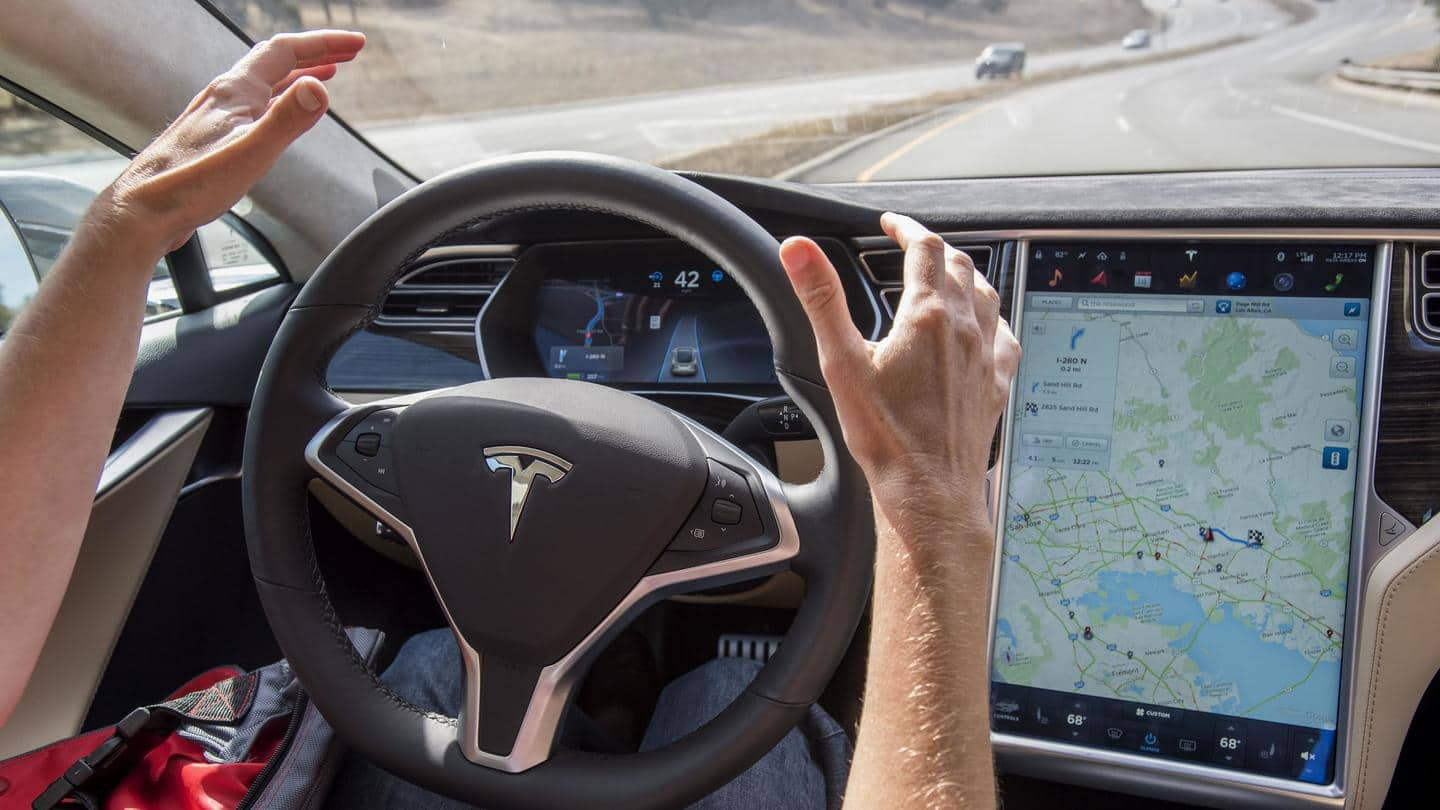
#NewsBytesExplainer: What is Tesla Autopilot and how it works?
What's the story
Tesla's Autopilot is an autonomous driving assistance system that reduces the driver's workload and ensures more convenience and safety.
The setup uses 12 ultrasonic sensors, eight external cameras, and an onboard computer to work.
It is meant to be used by a fully attentive driver and is offered in the form of two packages, namely Autopilot and Full Self-Driving Capability.
Here are more details.
Functioning
How does it operate?
The Autopilot is based on a deep neural network and can sense the surroundings of the car via cameras and ultrasonic sensors. This heightens the driver's awareness of the vehicle's environment.
There is also a powerful computer inside that receives and processes the inputs from the cameras and sensors within milliseconds and aids in making the drive safer.
Information
A look at the Autopilot package
The Autopilot package comprises two features known as Traffic-Aware Cruise Control and Autosteer. The former ensures that the car's speed and that of the surrounding traffic are equally matched while the latter uses Traffic-Aware Cruise Control to steer the four-wheeler within a marked lane.
Premium pack
What does Full Self-Driving Capability offer?
Full Self-Driving Capability offers a range of assistance features. Auto Lane Change moves the car to an adjacent lane, while Autopark aids in automatic parking.
Smart Summon maneuvers the car around objects and finds the owner in a parking lot. Navigate on Autopilot guides the four-wheeler from on-ramp to off-ramp.
Finally, Traffic and Stop Sign Control automatically slows the car on approaching a sign.
Information
These safety features are available on all Tesla cars
Thanks to Autopilot, all Tesla cars built after September 2014 get a bevy of safety features. They include automatic emergency braking, blind-spot monitoring, lane departure avoidance, side collision warning, forward collision warning, emergency lane departure avoidance, and obstacle-aware acceleration.
Failures
What are the limitations?
The Autopilot does not promise self-driving and only aids an alert driver at the wheel. It can be deactivated by using the cruise control stalk or applying brakes.
Its performance may be affected by poor visibility (due to rains, fog, snow, and bright light), application of adhesive products or excess paint, damaged bumpers, interference from other equipment, and passage via narrow or winding roads.